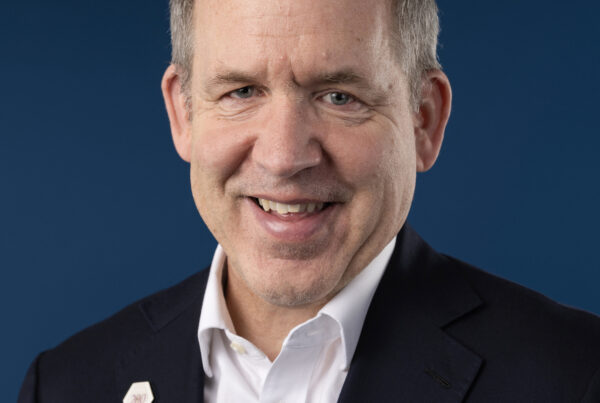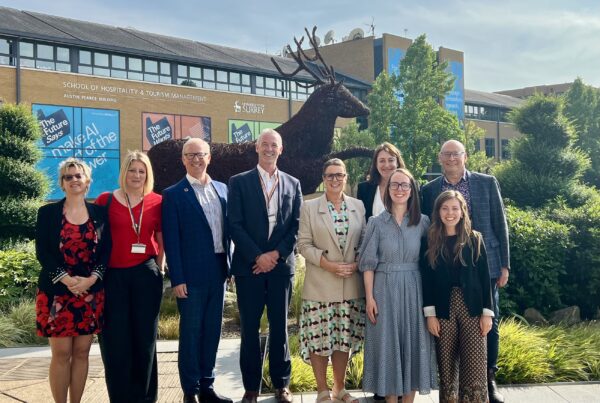What are our future skills needs and how can we provide for them?
The SkillsFuture initiative in Singapore is a globally leading example of industry, government and higher and further education institutions working together to plan for and deliver the lifelong learning strategy of a nation.
There are now broader global moves towards lifelong learning and to a competency-based approach to future higher education.
These trends are of great consequence to the current deliberations taking place by the review panel for the Australian Universities Accord. The lessons from SkillsFuture are vital to learn from in shaping the future of other global higher education systems, including Australia’s, through this once-in-a-generation change.
Singapore has a very different environment from elsewhere in the world in terms of how policy is set by government and accepted by multiple stakeholders. The concepts of industry and government partnerships, and the setting of national strategy, are vital in a Singaporean approach to industry development and workforce planning. They have served it so well through 57 years of independence and nation building.
Diversification in higher education providers there has been recent, pronounced and influential. Building upon two well-established comprehensive universities, four new publicly-funded universities were founded in the past two decades, including discipline specialist institutions and other new institutions with an applied learning focus.
Together with the more vocationally-focused polytechnics and technical education institute, these post-secondary education institutions provide a strong base as part of workforce planning and system capacity building which are nationally strategically focussed.
It is noteworthy that from having followed so closely some individual models of UK, US and other international exemplars in their early development of its universities, Singapore has struck out more on its own path with SkillsFuture in 2015. It did so to be an early pioneer of a comprehensive national approach to lifelong learning.
While the formal higher education system was until now young, fast-growing, and responsive, it has now responded ahead of many others in making non-formal lifelong learning a national priority.
This is now an increasingly important need globally. Demographic change toward ageing populations through health improvements is being added to by widespread declining birth rates. The resultant ageing workforces are then additionally subject to the need to work longer in careers increasingly subject to technology and business model change, in a knowledge economy of accelerating knowledge and experience decay.
Lifelong learning is the new global learning priority and differentiator in a similar way to how needs of schools and school leaver populations has been until now.
Sharing experiences in this context is now crucial. The Higher Education Planning in Asia network founded in 2012 seeks to do this across the Asian region including with active engagement from more than 30 Australian universities.
Innovative private universities, such as Tecnologico de Monterrey in Mexico, are applying the principles to their own 150,000 students. They are doing so through close links with local, regional, and global industrial leaders and implementation through global partnerships.
The broader global drivers for this focus on lifelong learning could not be more important or urgent.
The higher education supply side is changing with mounting student debt often focussed on the highest levels of non-completors. There is widespread recognition of the need for new pedagogies, for technological innovation, and for new business models and learning products, including a widespread recognition of the value of skills and competency-based approaches.
But the delivery base is stubborn to adjust to these system issues with infrastructure, culture, leadership and systemic inertia leading to incremental change at best, and resistance in many parts.
The tension with the slow pace of supply side evolution is being met by a demand side that is also dynamic. Structural demographic changes in learner populations, are adding to accelerated changes in student expectations.
These are increasingly focussing on employers’ needs, and they are becoming more articulate in expressing need and dissatisfaction. Their needs are evolving increasingly quickly, without it only being a case of them finding their voice, through the changing nature of work, and accelerating technology change.
Generative AI has great implications on the university business model and its prevailing pedagogy. The assumption that current graduate outcomes match long term workforce needs is under increasing pressure.
Rather than thinking that the only priority is more public funding, or tweaks to the existing set up of current providers and settings, the most critical need right now is for a national lifelong learning strategy.
This is not being met by piecemeal approaches to micro-credential developments, and short course funding provision, alongside capped funding and job ready graduate packages, that seem as ill-suited to job readiness as it is possible to be.
What seems clear is that the lifelong learning needs of any nation cannot be met in the same way as those that were identified for immediate post-secondary education. They are particularly ill-suited to being left as the concern and responsibility of current higher education providers in isolation.
All nations in developing a lifelong learning strategy need a strong focus on demographic data and its understanding, an ability to model and understand future workforce needs, and a national debate and dialogue on the nature of the future of work. They will require new multi-stakeholder models of collaborative and partnership-based provision in a shared strategy.
Many countries will benefit from a new agency to own this problem across government, business, and a range of providers. It appears almost impossible to be met by being left to current providers in the sector alone. For Australia to borrow from the SkillsFuture experience might mean adding the Independent Higher Education Australia organisation, different state-based TAFE providers, representatives of groups of employers and the dedicated input of futurists. It needs skilled and detailed demographic data input from organisations such as birthgap.org.
This needs a breaking of the mould of our current hierarchy and arrangement of providers and the policy support that surrounds them.
That includes the current separation in HELP arrangements between FE and HE, and provider standards and their registration that are unhelpful to a lifelong learning focus. And it needs dedicated lifelong learning-oriented funding and support.
Australia does not have to reinvent the wheel to do this. It can learn from SkillsFuture in Singapore, which when they made their first forays into this had much to learn from the Australian TAFE system of its time.
The key lesson is strategic partnerships between government, industry, and providers, all informed by common frameworks and standards, data and a strategic mindset across the ecosystem.
But Australia can also learn from partners in Asia and from global innovators.
The work being done to design, reconceive and experiment with the future of education in innovative places like Tecnologico de Monterrey, and its annual international conferences every January participated in by 5,000 global educational innovators, are a good place to start.
We covered many of these ideas and priorities together in a recent conversation on the HEDx podcast you can listen to here.
First published in Campus Review on 19th June 2023.
Emeritus Professor Martin Betts, Founder of HEDx
Michael Fung, Director of the Institute for the Future of Education at Tecnologico de Monterrey in Mexico









